In our last article, we addressed the topic of human-large carnivore coexistence and drew parallels between India and Europe. As we mentioned there, conflicts with large carnivores have been a continuous topic along our journey. However, when we crossed the border to Nepal to visit Chitwan and Parsa National Park on the Nepalese side of the Terai Arc, we encountered something that was completely new to us:
Human-elephant conflict
As for most megafauna, the number of Asian elephants (Elephas maximus) has decreased rapidly within the last 100 years. Nowadays there are 40.000 – 50.000 Asian elephants – around 30.000 of them living in India – while there were over 100.000 around 1900. In Nepal, there are only around 200 resident wild elephants left and around 150 that regularly cross into Nepal from reserves at the Indo-Nepalese border. And while their number has bounced back from only around 50 in the 70s, their habitats are still very much restricted and fragmented. Globally, the Asian elephant only occurs in 5% of its original distribution. This is especially problematic as elephants are the biggest grazers on land and need up to 150kg of food per day. This means they need to roam long distances to find enough food all year round. However, as human-dominated landscapes expand, elephant habitats become fragmented.
Where elephants and humans meet
Luckily, India and Nepal have established a network of protected areas along the Terai conserving elephant habitat. Nevertheless, the Terai Arc is the most densely populated area of Nepal, so fields and settlements surround the reserves and many people roam in the forests to collect non-timber forest products like fuelwood, herbs or honey. On the other hand, elephants go to the fields to feed on nutritious crops and walk through fields and villages on their way to other forest patches. This means that humans and elephants regularly come into close contact.

While elephants, like all animals, are peaceful and shy in nature, they will use their massive power and up to four tons of weight to defend themselves. And while elephants are considered holy animals in Hinduism and worshipped by most Nepalis, they can do massive damage to crops and surely are menacing when they move through a village. In Parsa National Park, we learn about the resulting human-elephant conflict from Dr. Ashok Ram, chief conservation officer of the park and expert in this topic.

Elephants pose a real danger to human lives
Around 50-60 elephants live in the area and move between Parsa National Park, Chitwan National Park and Valmiki Tiger Reserve across the border. While they are one of the main attractions of the parks and their population increase is one of the biggest local conservation achievements, they are also the species that causes the most problems with local communities. In fact, elephants are actually the mammal species causing most human deaths in South Asia. In India alone, elephants kill around 400 people per year, while tigers – famously portrayed as man-eaters – only kill around 40 people per year.
It is a common misconception that most people are killed by predators because they see them as prey. On the contrary, humans are in the very fortunate position that they are not on the menu for a single predator species. Hence, tigers stay away from humans as much as possible and prefer to remain unseen. Elephants, however, have neither the ability nor the need to hide. They are the biggest animals on land and nothing would dare to attack them openly. Their size and strength also allows them to get through obstacles rather than around like most animals would. This makes it very hard to protect fields from them, even though there are several methods to deter elephants.
Problematic human behavior
In his research, Dr. Ashok Ram found that many attacks on humans are caused by human activity aiming to chase away elephants, e.g. with firecrackers that make the elephants panic and turn violent. As most attacks happen in the evening, alcohol intoxication also plays a role. This is a complex problem to solve as most encounters and crop raids happen among poor communities on the edges of protected areas, where a lost harvest is a severe problem. Hence, the farmers have little choice but to try to scare away the elephants, risking their own lives in the process.
The extent of this problem is demonstrated by a recent case. One single young bull living around Parsa has killed five people in the last six months. Similar to humans, young males that usually live alone or in bachelor groups are the most aggressive individuals and responsible for the majority of attacks on humans. Incidents like this naturally lead to backlash and retaliation that is not only aimed against the elephant, but also against the national park administration. Only this February a group of people vandalized a checkpoint of the national park after a woman has injured by an elephant and some locals got the impression that the park administration cares more about elephants than humans.
Ways forward
Nevertheless, there are ways to at least decrease the problem. Firstly, elephant habitats must be truly connected. This means creating corridors between them that are big enough so that elephants don’t need to cross fields and settlements to get from forest to another. Secondly, farmers need compensation for lost crops so that their livelihood does not depend on chasing elephants away from their fields. And thirdly, there needs to be education and financial support for effective deterrents like adequate fences, cultivation of crops that elephants dislike or the creation of a response team.
Captive elephants
The second aspect of human-elephant coexistence in Nepal are captive elephants. Contrary to common wording, these elephants are not domestic. They have never been domesticated like cats or dogs, which have gone through the process of ‘domestication’ (a socio-biological process that happens over the course of many generations of human-guided breeding). There are probably almost as many elephants in captivity (ca. 150) in Nepal as wild ones and the number has been increasing since the 70s. This is mainly due to the rise of elephant rides as a tourist attraction. To learn about this topic, we visited Sauraha, the gate to Chitwan National Park and epicenter of elephant tourism in Nepal, and met with experts from the National Trust for Nature Conservation´s Biodiversity Conservation Center as well as the NGO ‘Stand Up 4 Elephants’.

Elephant rides
In Sauraha, it is common to see elephants walk through the streets with their ‘mahout’ – their personal caretaker – sitting on top. Everywhere in Sauraha tourists can book elephant tours where up to four visitors sit on a platform that is tied on top of the back on the elephant. During the 2-hour tour, the elephants walk through the jungle and the tourists on their backs hope to see some wildlife. Michael Bailey, co-founder of Stand Up 4 Elephants explains that in high season, elephants do up to seven rides a day working from 6AM to 8PM. Another, seemingly better but in fact also forced tourism attraction is “bathing with elephants”, when tourists accompany these large creatures on their bath, be sprayed by them while taking happy pictures. When they are not doing a tour or the mahouts take them to graze or bath, their front legs and sometimes hind legs are chained to a pole that makes it impossible for them to move. The reason being that captive elephants can indeed be dangerous and regularly kill people.
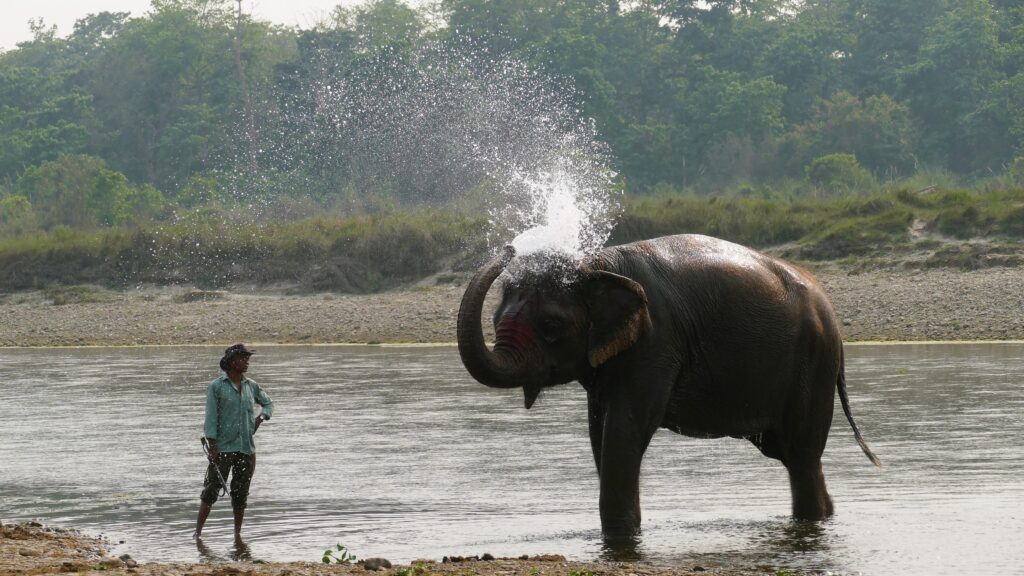
Too dangerous to control
We quickly learn that captive elephants are even more dangerous than wild ones, as many of them are deeply traumatized. Elephants are very intelligent and emotional animals that create deep bonds within their herd. But captive animals are taken away from their mothers at a very young age and often trained using cruel methods including physical violence as well as traumatizing experiences like lighting fires right next to them to habituate them to it. The result is an animal that is strong enough to tear down a building and emotionally sensitive but also severely traumatized.
Showcasing alternatives
The mission of Stand Up 4 Elephants is to spread awareness about how much the elephants suffer and to show locals and tourists that there are other ways. In the first years of their establishment, they launched the so-called ‘Elephant Happy Hour’. This meant that they booked a captive elephant not for a tour or elephant bath, but to give these majestic creatures an hour of free time. Tourists could accompany the elephants, follow from a safe distance, and just enjoy how they made their own decisions.
First, the mahouts didn´t understand why somebody would pay to just watch an elephant do its thing. Sometimes we could follow them into the jungle, but sometimes an elephant spent the whole hour just taking a nap. However, it was beautiful to be able to give them at least one hour of free will and see what they do with it.
Michael Bailey, co-founder of Stand Up 4 Elephants
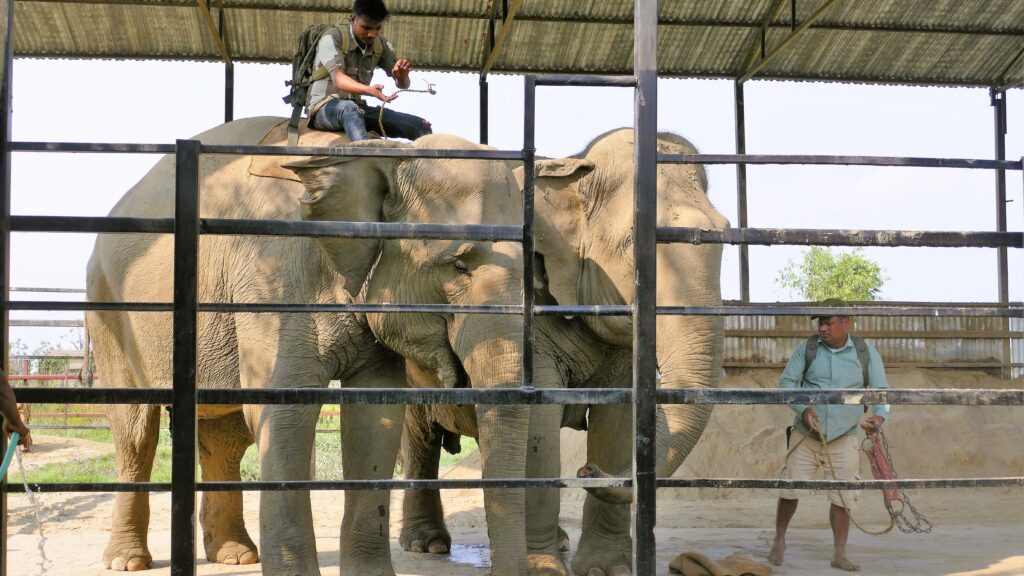



The team aspired to do more and eventually secured enough funds from international donors to buy two elephants that used to do rides and give them a better life in the elephant shelter that they built in 2018. Everyday, the elephants to go out to the jungle for hours to feed and when they return, they can freely roam in enclosure instead of being chained. Michael tells us that this is only possible because they train them carefully and use positive reinforcement instead of punishment, which creates a bond of trust between the elephants and their caretakers.
The team also shows us some of the health problems that the captive elephants suffer from. Foot issues are the most common, because elephants are made to move all day long on forest floor, not on roads or spending hours being chained up. Malnutrition, negligence and carrying heavy loads also lead to a plethora of other problems like dental and motoric issues, weight loss as well as digestive problems.
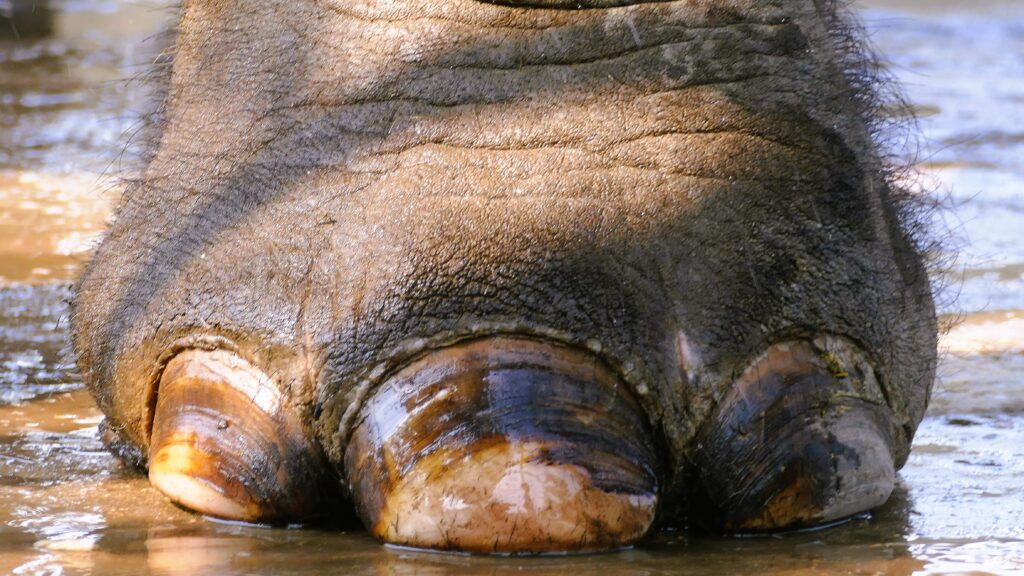

Elephants in public service
What surprises us even more is that Parsa National Park, Chitwan National Park and the National Trust for Nature Conservation also own captive elephants. Moreover, each national park has its own elephant breeding centers to raise new elephants for their service. These individuals are used to patrol the national parks and help with rescuing wildlife, such as capturing problem tigers. Sadly, these elephants are held in similar conditions as the elephants used for tourism. The females in the breeding centers are chained up most of the day and wild bulls regularly come to the breeding centers to mate with the chained-up females. This is why Michael calls them ‘raping centers’ instead of breeding centers. In addition, using elephants to patrol is pretty inefficient as they have to spend most of the time eating, which means they can’t actually patrol much.
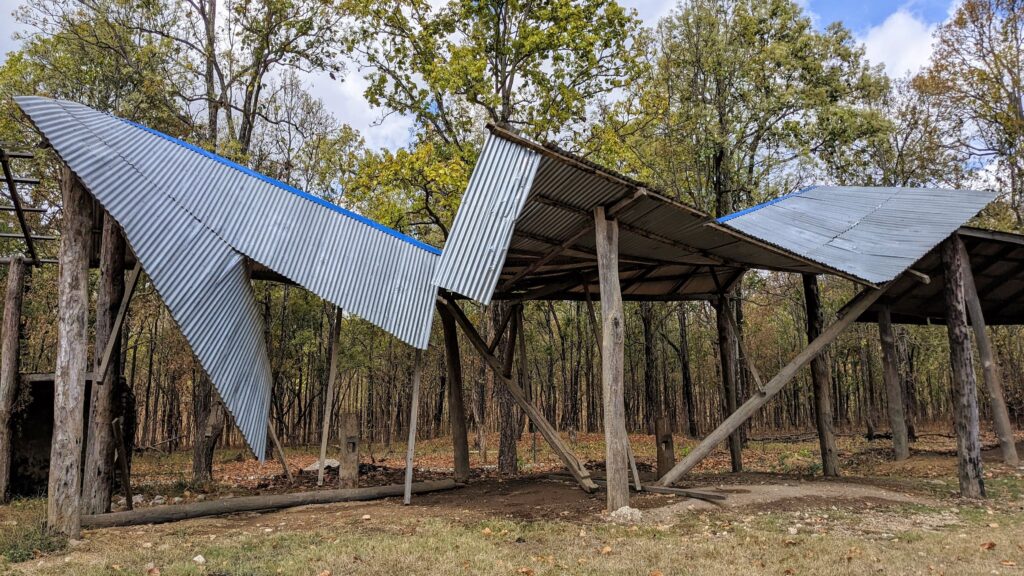
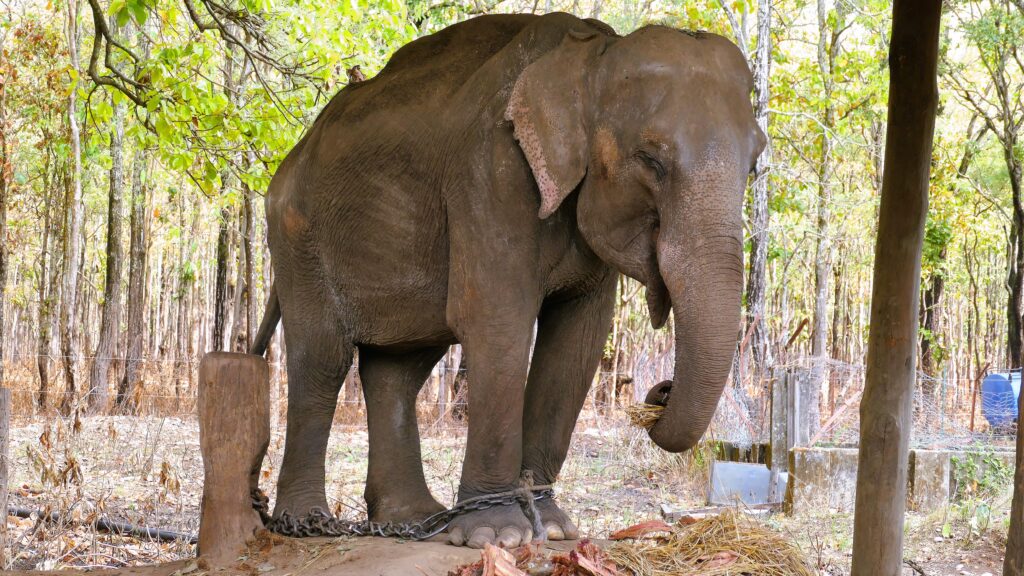
Cultural differences
For most western tourists elephant rides and the way they are kept are immoral and criticism is loud. Michael tells us that few westerners are interested. However, many Asian tourists love the elephant tours and hence they are still thriving. Michael emphasizes that riding on these holy animals is not a sign of disrespect for Hindus. They worship these animals and frankly are simply not aware of the real impacts on the elephants.
Dr. Babu Ram Lamichhane from the Biodiversity Conservation Center generally agrees that Nepal should move away from keeping elephants in captivity. However, he emphasizes that this takes a lot of time. And indeed, it is a complicated process. While some ethical elephant shelters (like Tigertops, Sapana or Elephant Walk Sanctuary) have popped up in Sauraha offering experiences like elephant walks instead of rides, they rely on donations and are not yet an economic alternative to the popular rides. And to build appropriate sanctuaries for all 150 captive elephants would take a huge amount of money and space. That´s why Dr. Ashok Ram suggests to release them back into the wild aka the protected areas of the Terai. This idea however brings forward the problem of human-elephant conflict again, especially since these elephants are used to humans and to being fed, which in return increases the likelihood that they will seek out fields to feed and come close to humans.
How can we protect wild and captive elephants as well as humans?
Even though we have heard of human-elephant conflict and the issue of captive elephants before, we were not aware how serious these issues were before we entered Nepal. Elephants are beautiful, majestic and emotional individuals that are worshipped by Hindus. But they are also simply so big that in a fragmented landscape like the Terai, conflict with humans is hard to avoid. And while luckily elephant numbers are rising again, so is the frequency of the conflict. Thanks to the works of Dr. Ashok Ram, Dr. Babu Ram Lamichhane and others, the causes and solutions are becoming more clear, making it possible to address and mitigate the conflict.
In case of the captive elephants, there are clearly cultural differences when it comes to their acceptance. However, from any animal welfare perspective, it is clear that they suffer physically and mentally and as a direct consequence pose a real risk to humans. For the safety of both elephants and humans, animal-welfare practices must be quickly adopted. The foundation for that is education of mahouts and owners that often know very little about these animals.
The private trade of elephants is actually already forbidden in Nepal by law, but not enforced so far, contributing to illegal wildlife trade. On the long run, the Nepalese government must find a solution for these captive but endangered animals and abandon the practice.

